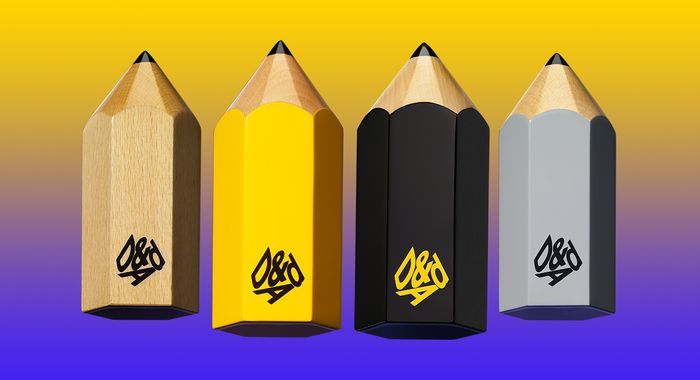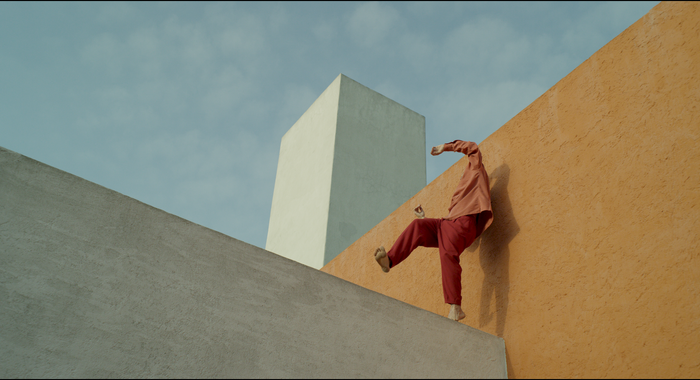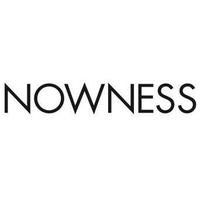A write up of my D&AD Festival keynote, from May 2017.
I love telling stories. I don’t, make “content”.
In fact, the word “content” makes me DISCONTENT. Because great creative work shouldn’t be contained.
For me, using the word “content” smacks of a distribution-centric view of the world, where containers (like cinema, TV stations, billboards, a Facebook feed etc.) simply have to be filled.
Great stories shouldn’t be generic objects that fill a stream, or a bucket, or a platform. For me, the term lacks nuance and, importantly for the point I’m hoping to make here, any sense of human connection.
So in this article (adapted from my D&AD Festival keynote) I’m going to tell you a story.
A story of a point of view.
As is befitting a keynote presentation; it is my point of view!
But it’s a point of view put into practice, and I hope that practice will show you how discontent can be a really positive thing. How a bold creative viewpoint can fuel all sorts of wonderful work that reflects, and hopefully helps to progress, the world that we live in.
I also hope that a lot of this is stuff is really familiar to readers, and what I say perhaps just helps make a few more connections between work you’re already engaged in.
I have developed this point of view because for the past 20 years I’ve been working at the intersection of storytelling and audience, predominantly across cinema, television and digital platforms.
I am the Creative Director of NOWNESS.
If you don’t know what NOWNESS is, then here’s a very quick overview.
NOWNESS is a global culture channel.
We stand for creative excellence in cultural storytelling
Our purpose is to celebrate the extraordinary of every day, and I’m going to share how our practice is informed by, and feeds, this point of view.
But first, some context.
NOWNESS, and everyone in this audience, is working in a rapidly changing landscape. And given that my career has been focused between traditional and digital media, this has pretty much always been the case for me.
The point of view I’m sharing with you here is informed by the work I do now, by my time as an commissioning executive responsible for innovation at Film4, and as an independent producer before that.
But first I want to say something from a much more personal point of view — that of course feeds what I do — just to kick off: I don’t just loathe the word “content”, I’m also increasingly discontent at the state of the world today…. because, well, look around…!
But the good news is, I see a way to drive change. To resist.
Don’t worry, I’m not going to suggest that we all share a tasty carbonated beverage and everything will be alright. Or call a snap election.
We all read articles like this, or go to conferences, because in some way, shape, or form we’re creative and because we believe that creativity is a hugely powerful tool of expression and communication.
If we stop and think about this for a minute; how great is it that we get to do our jobs in this context? I think it’s completely brilliant! Because I think that in the current climate we need to understand each other better and we need to celebrate difference.
For me, this means that as creators we have a responsibility. Now, more than ever, the arts, culture and the wider creative industries need to work to create connection. And to do that, we have a responsibility to engage with the world around us.
Given that NOWNESS is not just a commissioner, but also a curator and a channel with a highly engaged following, NOWNESS has a very clear responsibility.
So I’m discontent that more creators, curators and platforms don’t acknowledge this particular responsibility. What am I talking about?!
Well, to paraphrase Spiderman (although French revolutionaries and Churchill have also said versions of the maxim before Marvel Comics coined the phrase):
We get to engage with tens of millions of people right around the globe. Every. Single. Day. This is a huge privilege as well as a marker of our hard work.
But accepting the responsibility that comes with that can be a difficult thing to grasp, because it carries several challenges that run right through everything we do:
- In the development of our work in house
- In the making of our work with filmmakers and partners
- In the sharing of our work with audiences
And to be responsible in all of these areas, my point of view is that we have to represent the world we live in, both internally and externally.
But, as media interaction, and therefore audience power, increases, here’s the central question of this talk:
How do we develop and champion creative, risk taking voices and stories, and give audiences things they don’t expect or already know?
This is the critical issue: how do we avoid becoming just another “content provider” or platform that churns out work to feed an algorithm because it’s what we know the audience have already liked?
How do we find the nuance between a thumbs up or down approach to creativity?
To pick this apart, let’s step back up a second and take a strategic view.
You’re also probably reading this not just because you’re creative, but because you know we’re in a rapidly changing landscape; the creative sectors are simultaneously thriving and precarious places to be.
From an industry perspective we have all sorts of gurus pontificating about fragmentation, killer apps and the unstoppable rise of mobile. If you follow this argument, then the biggest thing at play here for us is the idea of the “battle for attention”.
In this alleged battle: galleries must compete with Pokemon Go, cinemas with Punchdrunk, the media establishment with the giant “content” empires of the, rather ominously coined, FANG (which stands for Facebook, Amazon, Netflix and Google).
But I’d argue (or, rather, have argued here), that while attention patterns are changing, they’re not diminishing wholesale.
So how do we tackle this question at NOWNESS?
We put creative first. Which is of course, a blindingly obvious answer and a very easy thing to say. But how do we actually do it?
As a relatively small creative label, we use our size to focus on what we can do best, and I’d propose that what we do could be a useful microcosm example of what bigger players, or those in other areas, could also do.
When we’re developing, making and sharing our work, we obsess! We obsess about quality not quantity. We obsess about engagement not views.
As I said, this could be considered simplistic, but we firmly believe that creative integrity will equal commercial success. So we won’t put the commercial cart before the creative horse. We understand they’re both on the same journey, but their order is critical to us!
Call me naive, but I believe this should be the case for anyone working in the digital sphere. And you might call me naive because, in many places, we’re seeing a race to the bottom.
The likes of clickbait and listmania are constantly served up to audiences to do little more than chase numbers and serve those algorithms. And, numerically at least, those models are working.
So how do you put creative quality first right across the business of a channel — those three stages of development, production and distribution?
(Just a small selection of the talent NOWNESS works with)
Another blindly obvious statement, but we do it first and foremost by working with exceptional talent.
The difference for me is that talent isn’t purely about “the right man for the job”. If you want to connect and communicate in this fragmented age, then that talent has to be representative. You need to go beyond diversity initiatives right into actual structural change.… (As an aside, if you haven’t seen Riz Ahmed’s brilliant speech to Parliament on this yet, do check it out!).
This means:
- Your decision makers have to be representative
- Your filmmakers have to be representative
- Your on screen talent has to be representative
You must be inclusive across all of the key areas including class, ethnicity, disability, age, sexual orientation and gender identity.
To engage a global audience, this attitude must cut right across all of your work, end-to-end through development, production and distribution.
The above image is just a small snapshot of the talent we work with on our films. But if I just reorganise the image a bit, you might notice something interesting:
And I can say unequivocally that we didn’t get to this place slowly, over years, with a scheme or two. We just made it our policy on our commissioned films.
On all our commissions we aim to have:
- 50/50 pitches
- 50/50 commissioning
- 50/50 output
So that might be — depressingly in 2017 — somewhat rare, if not unique, and we don’t manage it all the time.
But we do this because we want to, and have to, make unique work. From both a point of creative principle but also as a commercial strategy.
Because unique work will differentiate us in the marketplace.
But how can you design to be unique?
I’d say we do this in four key ways….
Firstly:
I don’t recruit what I already know.
We need to look at the world differently…
So my team are from a really broad range of places, backgrounds and specialisms.
Secondly:
By questioning the way things are done.
Our strategy is one of curiosity and challenge.
Thirdly:
By harnessing our own expertise and instinct.
Our outlook is a result of that team and that strategy and we trust our creative abilities, but we also seek support when we need it.
Fourthly:
By positively avoiding any temptation to copy what’s working for other channels.
Our attitude is one of confidence in our approach.
And that approach is built on a very purposely simple set of commissioning criteria that has become our guide in all we do.
This strategy boiled down to its core is that a NOWNESS film has to be:
(Mascara by Irving Penn)
Something you cannot see elsewhere. It’s exclusive.
(L.E.D. Surfer by Jacob Sutton)
It’s made in a way we haven’t seen before. It’s unique.
(Beautiful Rebels by Ryan McGinley)
It moves the audience. It’s emotional.
Because — philosophically and creatively — as I mentioned earlier, that should be the point of our work. Why else do we do what we do?
But this also has a commercial dimension. Because, if they connect emotionally, they’ll share the film. So your audience grows.
Here’s example of a recent film that we made that I think illustrates this really simply. For me it reflects the idea of “art as a trigger for experience” and inspiration really well. It juxtaposes two artforms in a way that brings them together beautifully — something we’re known for at NOWNESS:
Because in this hugely exciting digital day and age, it’s all about audience.
As I mentioned earlier, attention spans are not diminishing wholesale.
But they are changing and just because we take a purposefully strong creative position in this space, we know that you really have to compete to gain attention.
And we believe that it is taking that strong creative position makes it possible to push against the race to the bottom.
This is inherently risky — we don’t always get it right. We have films that don’t grow an audience and that miss their mark…
But we have more films that hit bullseyes we never even expected to find! So it’s about having ways to properly hook audiences, and we do that in a key way….
We focus our storytelling into series strands.
Again, I admit that this is absolutely NOTHING new — it’s the bedrock of traditional TV broadcasters and new heavy hitters like Netflix. But with our strands we look to cover a huge range of subjects and talent to keep pushing towards that goal of being unique.
Here’s one of our flagship formats featuring musician JD Samson that shows this well
We also try to look through expert eyes to tell stories in accessible ways. Embracing that it’s not about watering something down or spoon-feeding an audience. It’s about trusting their curiosity and desire to connect.
Here’s another flagship format to illustrate that:
Working in series in the digital space helps us to build strong connections with our audiences.
And of course you can then see WHAT they watch and HOW they watch.
But for us the interesting bit is thinking about WHY they watch.
Because in an era of ever-increasing data it’s all too easy to focus on the WHAT and not ask the WHY.
Let’s illuminate that train of thought by sharing a very simple piece of NOWNESS’ own data intelligence, thinking about the what, how and why.
What do they watch?
The average film on NOWNESS is 4 minutes long. So we are at the cutting edge of audience relationship. We’re not short enough to be seen in the stream. We demand the audience stop and watch our work, rather than simply glance at it as they scroll.
How do they watch?
We know empirically that we have a 65% completion rate on our films. Why?
Because the stories engage them. We know that because they’re not just watching… They’re sharing, they’re commenting, they’re rating and liking.
We know that because we listen closely to what our audience tell us when we put this work out across our networks. We seek qualitative information to add meaning to the quantitative data we track.
This means we can tune in to audience. We know what works and of course what doesn’t work. Doing this helps us to understand how to stay ahead of the curve. But crucially it helps us to bring our audience with us on the journey.
To illustrate; this is a genuine comment on our Facebook feed — from an audience member in Brazil. How gorgeous is it?
The quality of this interaction is what counts for me. I would prefer one of these to thousands of views. Because we’ve actually made a difference to a human being and Lucas here is doing our audience development for us!
He’s engaged, and so is engaging others.
I share this as an example of strong engagement, because when you have strong engagement, you can use this not to rest on your laurels, but to KEEP moving forward.
You have to be DISCONTENT!
Our series empower us to take more risks, pushing the boundaries of short filmmaking. As we tell all our partners — ignore the next agency that tells you to make 30 second spots because “that’s all the audience will watch”.
It’s not true. The figures I’ve shown you bear that out. The audience will properly engage with good work. Even if it’s quite challenging.
Here’s a great example from our provocative DEFINE BEAUTY series, which seeks to unpick the politics and prejudices of attraction, and takes on the topic of Contouring…
So if you can get engagement and experimentation right, you can really begin to reach for what — for me, creatively — is the most exciting territory.
That of fully immersing your audience in your world and you in theirs. I want to move deeper, going beyond engagement into immersion.
Because if you do that you can really begin to provoke debate and create resonances wider than your own sphere.
I love this film from our MOTHER NATURE series for this very reason.
It explores something deeply personal, but at the same time it is also universally resonant.
Immersion to me is key because it means proper connection. It reminds us of that responsibility I talked about earlier.
It is a two-way relationship that isn’t either push or pull. It isn’t outdated broadcasting “at”your audience.
And it’s not the latest media trick of making your audiences generate the content themselves (like sharing quiz results) to generate hits. It’s one that if handled right, protects a space for real respect for authorship, creative integrity and cultural value.
This immersion is important too because no-one knows what the future will hold (unless you’re Marty McFly!) and, fundamentally, as human beings we all need this sense of connection, however it is delivered.
On this, I heard Brian Eno recently say that “children learn through play, and adults play through art”. I don’t think we should forget this — we can offer a space to play — for storytellers and audiences.
And to hammer this home, it is even possible in the branded space- as you’ll see here with Chelsea McMullan’s film for our Audi UNTAGGABLE series:
So, summing up my learning thus far, I’d encourage you, as artists, makers, storytellers, agencies or institutions doing your very best creative work, to embrace being DISCONTENT.
Be discontent with being a closed shop: open up more. Share your strategies! Be discontent with the status quo.
Make your teams and your collaborators more representative. Let them challenge you. Let them changeyou.
By empowering a representative team, you enrich them. By enriching them, they’ll enrich your practice. By enriching your work, you enrich your audience.
Allow them in, and invite your audience to the party…
Be discontent with a one-way push conversation. Listen to what they tell you. Understandwhere you’ve failed; as well as succeeded.
In return, communicate clear and compelling messages that marry with, and challenge, your audience.
Be discontent with what’s around you. Never stop looking.
Actively use your audience insight to look beyond the expected. Look to the why not just the what, to ensure audience engages deeply in the work.
Remember — with great reach comes great responsibility!
And be discontent to do this alone. Do it together!
Work hand in hand with partners and audiences to push outside your own boundaries.
Unless you’re Apple, the world of the walled garden is a very limited and limiting one.
There are no set A-Z routes for this world. This is an adventure. Be content with the idea of drawing a treasure map, not following a road atlas.
If you’re willing to explore that treasure map and — vitally — share it with others, THEN we all have models for success that work for us and our audiences…
That sort of virtuous circle is what I’m reaching for.
If we can do that, then I’ll be pretty content!
(Article originally published on medium)



